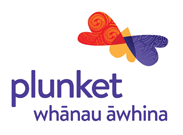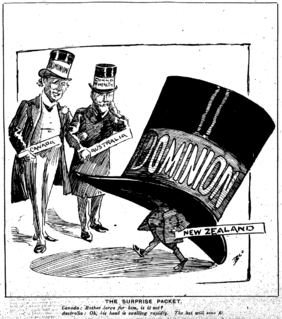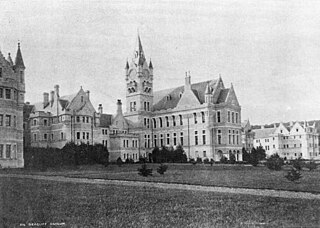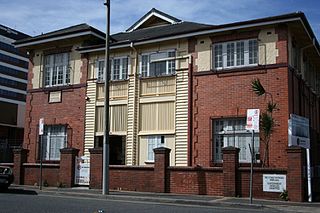Related Research Articles

The small town of Karitane is located within the limits of the city of Dunedin in New Zealand, 35 kilometres to the north of the city centre.

The Royal New Zealand Plunket Trust provides a range of free services aimed at improving the development, health and wellbeing of children under the age of five within New Zealand, where it is commonly known simply as Plunket. Its mission is "to ensure that New Zealand children are among the healthiest in the world". Much of Plunket's work is organised by volunteer bases throughout New Zealand.

The following lists events that happened during 1907 in New Zealand.
Alice Mary Bush was a pioneering New Zealand female physician, pediatrician and activist for family planning services and abortion access.

Sir Frederic Truby King, generally known as Truby King, was a New Zealand health reformer and Director of Child Welfare. He is best known as the founder of the Plunket Society.

Seacliff is a small village located north of Dunedin in the Otago region of New Zealand's South Island. The village lies roughly halfway between the estuary of Blueskin Bay and the mouth of the Waikouaiti River at Karitane, on the eastern slopes of Kilmog hill. Coast Road, an old route north from Dunedin, and the South Island Main Trunk Railway pass through the village.

The Canadian Mothercraft Society (Mothercraft) is a non-profit, charitable NGO that serves children ages 0 to 6, their families, their teachers, and their community.

Seacliff Lunatic Asylum was a psychiatric hospital in Seacliff, New Zealand. When built in the late 19th century, it was the largest building in the country, noted for its scale and extravagant architecture. It became infamous for construction faults resulting in partial collapse, as well as a 1942 fire which destroyed a wooden outbuilding, claiming 37 lives, because the victims were trapped in a locked ward.
Alice Hannah Holford was a New Zealand nurse, midwife and hospital matron.
Hanorah Philomena FitzGibbon MBE was a New Zealand civilian and military nurse, hospital matron and nursing administrator.
Eileen Marjorie Fosbery Chambers was a New Zealand nurse, hospital matron, nursing tutor and administrator. She was born in Sydney, New South Wales, Australia on 29 May 1906.
Amelia Bagley was a New Zealand hospital matron, midwife and nursing administrator. She was born in Dunedin, New Zealand on 2 October 1870.

Fortitude Valley Child Health Centre is a heritage-listed clinic at 112 Alfred Street, Fortitude Valley, Queensland, Australia. It was designed by Cecil James Virgo. It is also known as Fortitude Valley Baby Clinic & Nurse Training Centre. It was added to the Queensland Heritage Register on 12 August 2011.
Charles Maurice Bevan-Brown was a New Zealand psychiatrist and psychotherapist who practised in Christchurch from the 1940s to the 1960s. He established a clinic for medical psychology and founded the New Zealand Association of Psychotherapists.. He was influential in the formation and ethos of Parents' Centres New Zealand.
Sir Neil Colquhoun Begg was a New Zealand paediatrician, historian and cricketer. He played three first-class matches for the Otago cricket team after the beginning of World War II, but he is most noted as a paediatrician and an historian. He served as director of medical services for the Plunket Society from 1956 to 1977, and, with his brother Charles, wrote four books on the history of Fiordland. He chaired the New Zealand Historic Places Trust between 1978 and 1986.
Jessie Torrance was a New Zealand nurse and deaconess.
Margaret (Daisy) Hitchcock was a nurse from New Zealand who served in France in World War I.

Ria Tikini or Ria Te Kini, also known as Mrs Chicken, was a businesswoman, cultural informant, and midwife from Kāi Tahu and Kāti Mamoe descent. She was an informant for ethnographer William Anderson Taylor's work on Kāi Tahu history, and is credited as one of the midwives who paved the way for the creation of the Plunket Society of New Zealand.
The St Helens Hospitals were maternity hospitals located in seven New Zealand cities. They were the first state-run maternity hospitals in the world offering both midwifery services and midwifery training. The first hospital opened in 1905 in Wellington and the last one in Wanganui in 1921. The services of the St Helens Hospitals were gradually incorporated into other hospitals and the last hospital to close was in Auckland in 1990.
The 1939 New Year Honours in New Zealand were appointments by King George VI to various orders and honours to reward and highlight good works by New Zealanders. The awards celebrated the passing of 1938 and the beginning of 1939, and were announced on 3 January 1939.
References
- 1 2 3 4 5 6 7 8 9 10 11 Bryder, Linda. (2003). A voice for mothers : the Plunket Society and infant welfare, 1907-2000. Royal New Zealand Plunket Society. Auckland, N.Z.: Auckland University Press. pp. 86–87, 157–161, 166, 200. ISBN 1-4237-1969-7. OCLC 61335146.
- 1 2 3 4 5 6 7 8 9 10 11 12 13 14 15 16 17 18 19 20 21 Bryder, Linda (1998). Not just weighing babies : Plunket in Auckland, 1908-1998. Auckland [N.Z.]: Pyramid Press. pp. 33–44, 79–89. ISBN 0-9597871-4-3. OCLC 45550053.
- ↑ "Handsome Gift". Colonist. 13 August 1910.
- ↑ Rudd, Allison (19 August 2011). "Challenge turning ageing ex-hospital into flats". Otago Daily Times Online News. Retrieved 15 December 2020.
- ↑ Dunedin City Council (2014). "Heritage Fund projects - Dunedin City Council". www.dunedin.govt.nz. Retrieved 15 December 2020.
- ↑ "Truby King Harris Hospital (former)". Register of Historic Places. Heritage New Zealand . Retrieved 13 January 2021.
- ↑ "Karitane Hospital". Start (Christchurch). 5 August 1919.
- ↑ "Karitane-Hunt Hospital, Invercargill". Kai Tiaki. XVI (2): 92. April 1927 – via PapersPast.
- ↑ "New Karitane Hospital". New Zealand Herald. 25 October 1924. Retrieved 10 January 2021.
- ↑ Gatley, Julia (March 1994). ""And Save the Babies"". New Zealand Historic Places. 46: 21–23.
- ↑ "Karitane Hospital Nurses Home, Melrose, Wellington". Journal of the NZ Institute of Architects. 31 (2): 35–37. March 1964.
- 1 2 Hunt, Tom (2 December 2020). "1920s maternity hospital demolished". The Dominion Post. Retrieved 15 December 2020.
- ↑ "Truby King Historic Area". Register of Historic Places. Heritage New Zealand . Retrieved 10 January 2021.